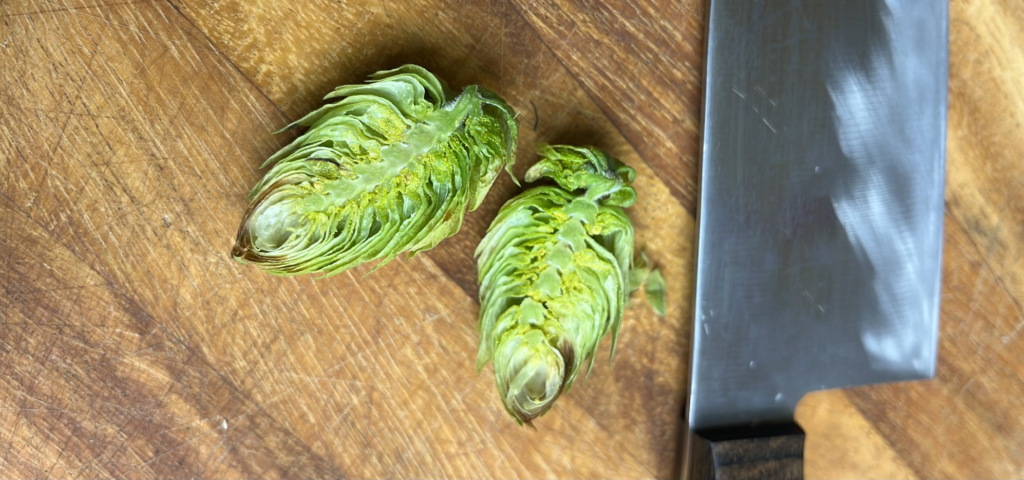
Fresh hops? Yes, they exist, and I f*cking love them—just as much as non-fresh hops. They’re good, and different.
Hops are harvested from August to September, then immediately dried, processed, and packaged to prevent spoilage. However, if you’re lucky enough to live near a hop farm, you can use undried, or “wet” hops right after harvest. Breweries near hop farms take advantage of this unique opportunity, especially in regions like Washington and Oregon.
Beer made with fresh hops has a unique flavor profile, offering earthy, grassy, floral, herbal, and citrusy notes that are difficult to replicate with processed hops. However, this uniqueness isn’t for everyone—some people love these flavors, while others don’t. Non-fresh hops, which make up over 99.99% of hop products, can also produce amazing beers and are often preferred by those seeking more predictable, familiar flavors over the distinct and sometimes unfamiliar character of fresh hops.
Again, I f*cking love it. Luckily, I’ve had the chance to use fresh hops for the past three years, and again this year, thanks to @theizzy. These hops, grown in Ventura, were delivered right after harvest, still attached to the bines—the hop equivalent of grapevines.
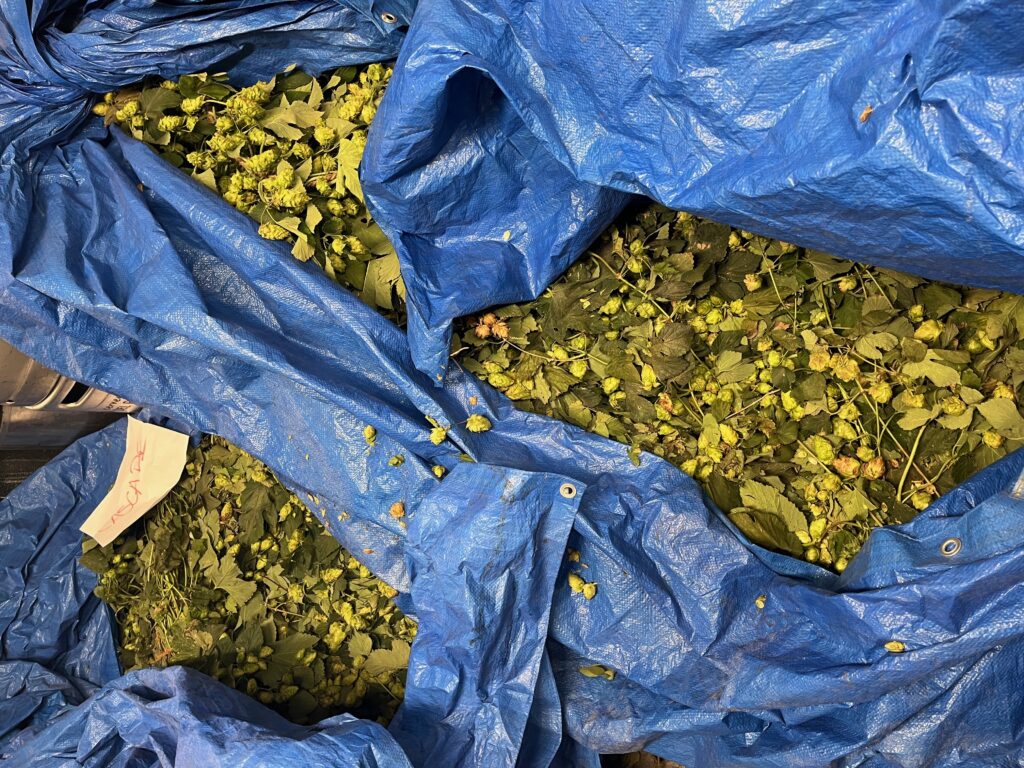
It’s a demanding task to handpick hop cones from the bines. This time, with help from @110brewingcompany, we spent four hours collecting 6.6 pounds of fresh Cascade hops.
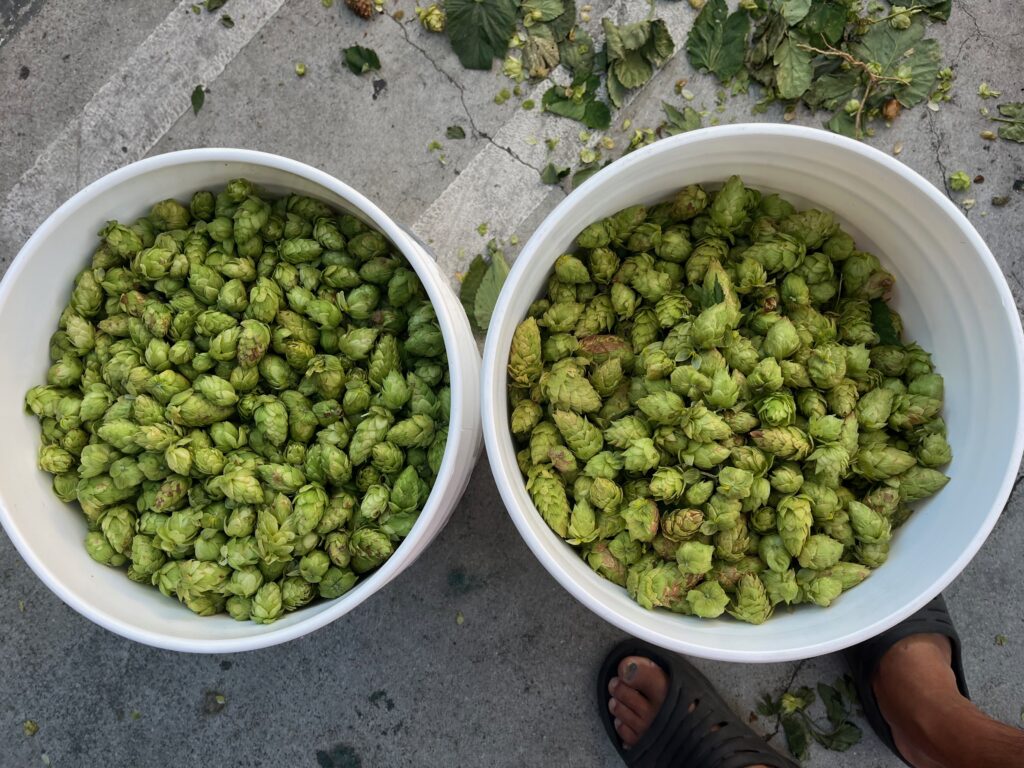
Afterward, I vacuum-sealed the cones and stored them in the fridge.
The Experiment
In previous years, I found that vacuum-sealed hops could stay fresh in the fridge for up to a week. But I suspected that freezing them would extend their shelf life even further. The big question: can I freeze them without any issues?
Like fruit, freezing hops breaks down cell walls, potentially resulting in better extraction of plant material—either for better or worse. Yakima Chief Hops® has been selling “Frozen Fresh Hops” to brewers too far from hop farms to use fresh hops. They use a “flash freezing” process that supposedly preserves flavors better than conventional freezing.
I don’t have access to that fancy tech, but I can still freeze my hops and compare the sensory results. I split my hops in half: I froze 3.3 pounds at 4°F and kept the other 3.3 pounds in the fridge at 38°F.
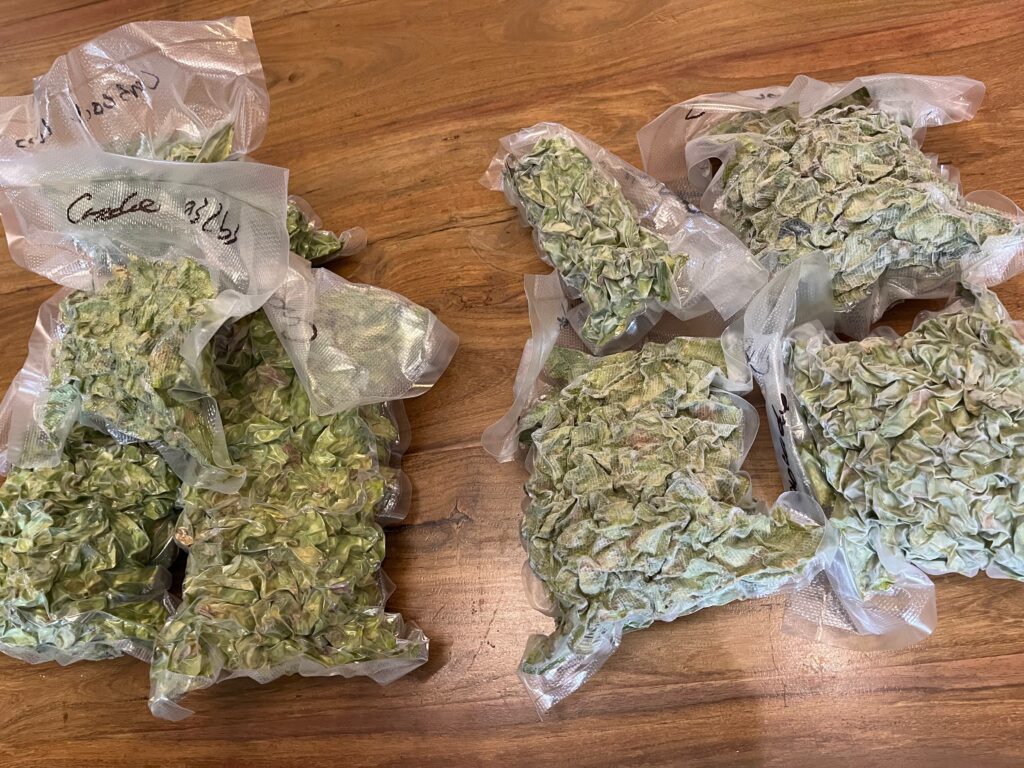
After 48 hours, I moved the frozen hops back to the fridge to thaw overnight, ensuring they reached the same temperature as the refrigerated hops. This minimized the effect of temperature differences when adding them to the wort.
Recipe (4.5 gallons each):
| Grain | Amount | Percentage |
| Pale Ale Malt 2-Row | 9 lbs | 100% |
| Water Chemistry | Ca | Mg | Na | Cl | SO4 | HCO3 |
| Concentration (ppm) | 103 | 14 | 68 | 149 | 159 | 105 |
| Mash | Temperature | pH | Duration |
| Saccharification Rest | 149F | 5.4 | 60 min |
| Hops | Amount | Timing |
| Cascade (Fresh Hop) | 8 oz | Mash (149F) 60 min |
| Cascade (Fresh Hop) | 8 oz | Boil 20 min |
| Cascade (Fresh Hop) | 36.8 oz | Hop Stand (175F) 30 min |
| Yeast | Amount | Pitched Temperature |
| W-34/70 | 2000 mL starter | 55F |
| Fermentation Profile | Temperature | Duration |
| Primary | 55F | 5 days |
| Diacetyl Rest | 65F | 7 days |
| Cold Crash | 32F | 1 day |
| Misc | Amount | Timing |
| Wirlfloc | 1 tablet | Boil 5 min |
| ALDC | 0.36 mL | Primary |
| Zinc Sulfate Heptahydrate | 1.0 ppm | Primary |
| Silafine | 4.5 mL | Cold Crash |
I brewed a SMaSH (Single Malt and Single Hop) Pale Ale to best showcase the difference in hop character. Yes, I used 34/70 lager yeast, so technically, it might not be a Pale Ale, but with 100% 2-row malt and 100% Cascade hops, it feels more like a Pale Ale than a West Coast Pils to me.
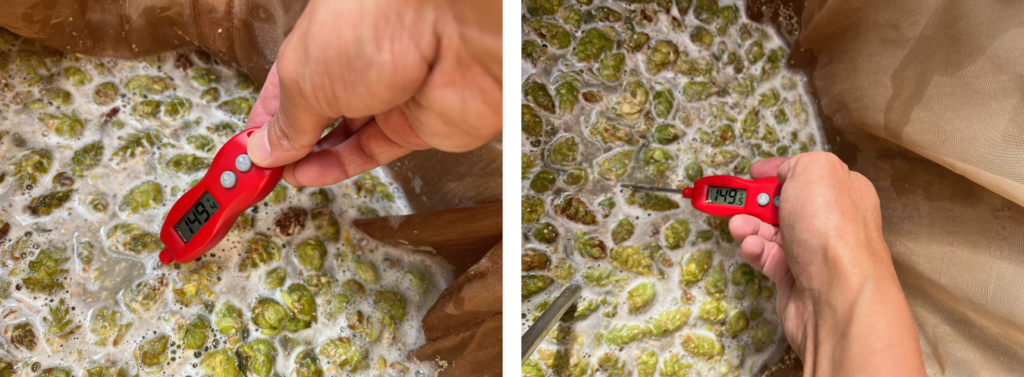
Last year, I went heavy on mash and boil hops (3.2 oz per gallon each), resulting in an extremely bitter beer. This time, I reduced both additions to about half (1.8 oz per gallon each) and increased the coolpool addition to amplify the aroma and flavor.
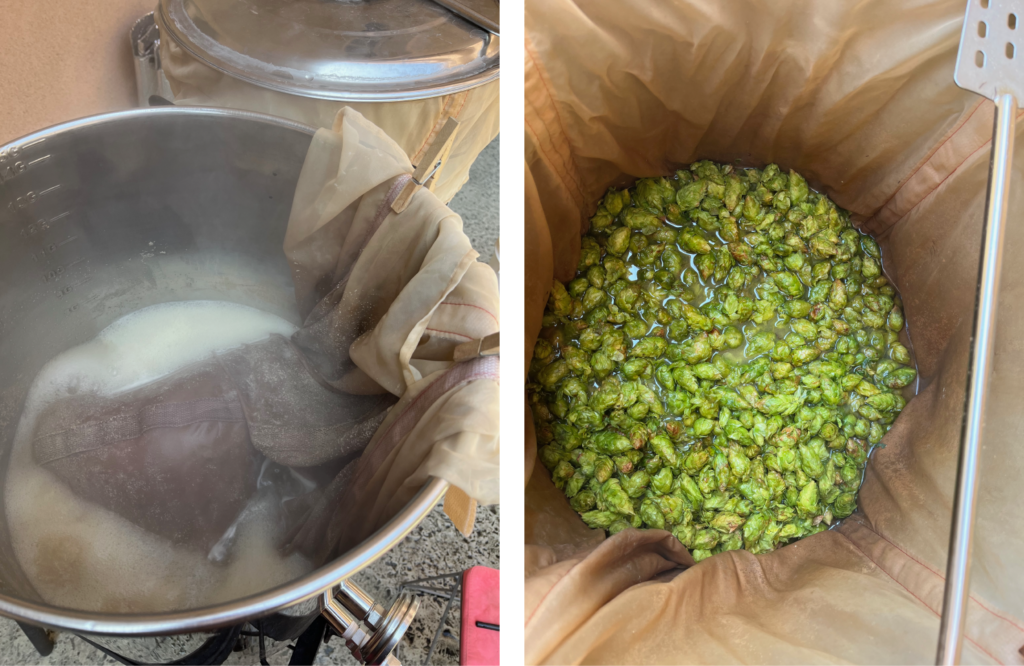
Then, I chilled the wort to ground water temperature, lifted the hop bag, and squeezed it as much as possible using sanitized gloves to extract every bit of hop goodness (and maybe badness too, who knows). It required some effort, as the oily hop materials clogged the mesh, which wasn’t exactly designed for this purpose.
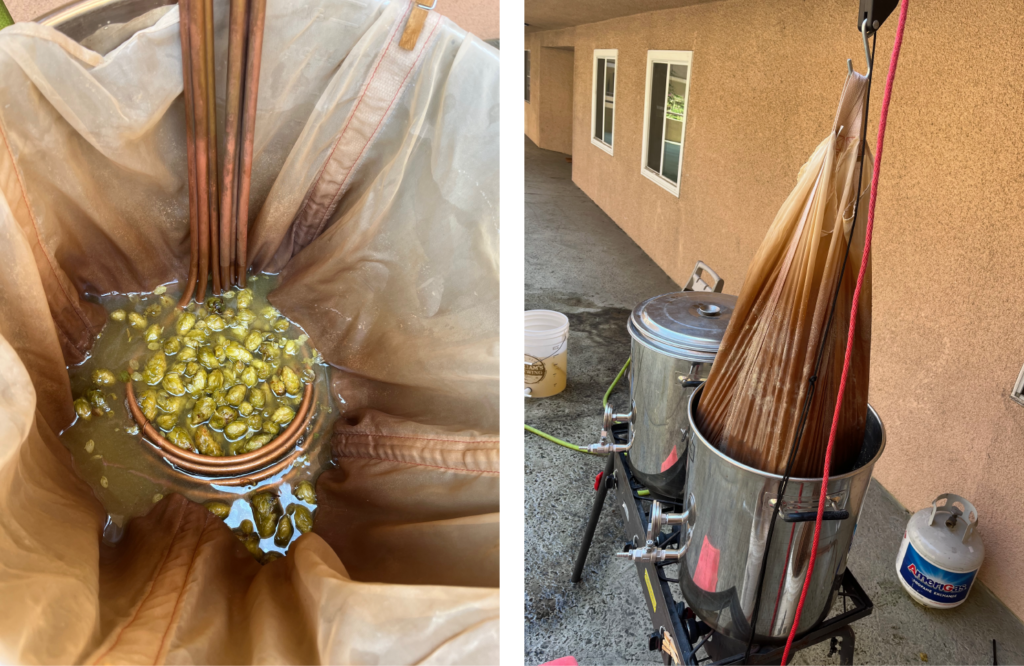
After chilling the wort, I noticed a slight difference in pH between the two batches (both of which were at 5.3 during mashing).
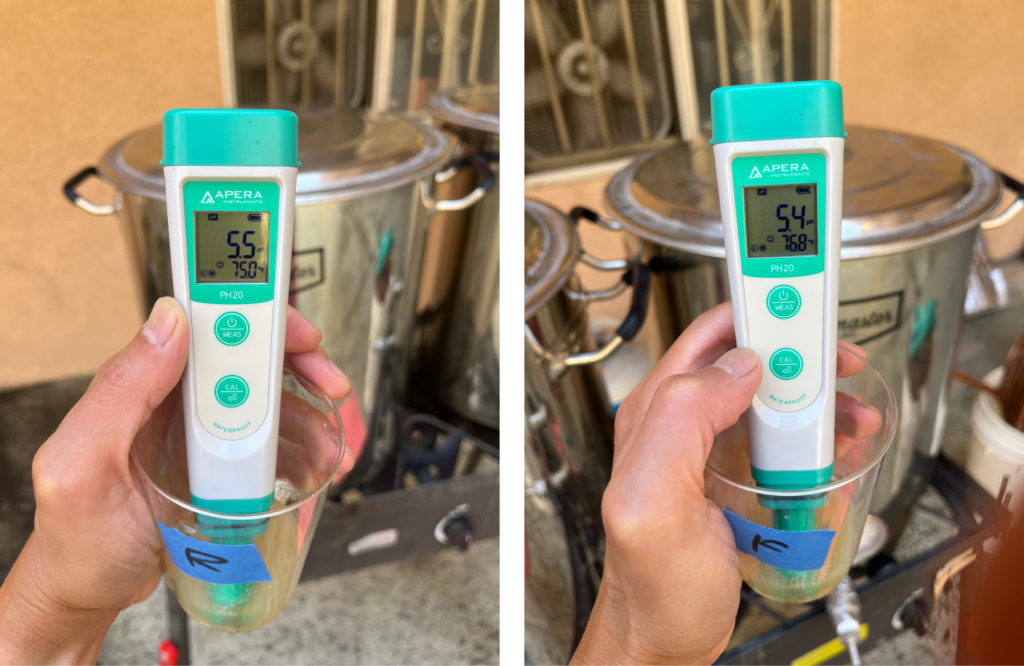
Both batches had an identical OG of 1.053. The pH for each batch was adjusted to 5.1 with phosphoric acid. After pre-chilling, the wort was left in the fridge until it reached 55°F. For the vitality starter, portions of the wort were reserved in small containers (bottom left), then added to pre-amplified, cold-crashed yeast, and stirred (right) before pitching.
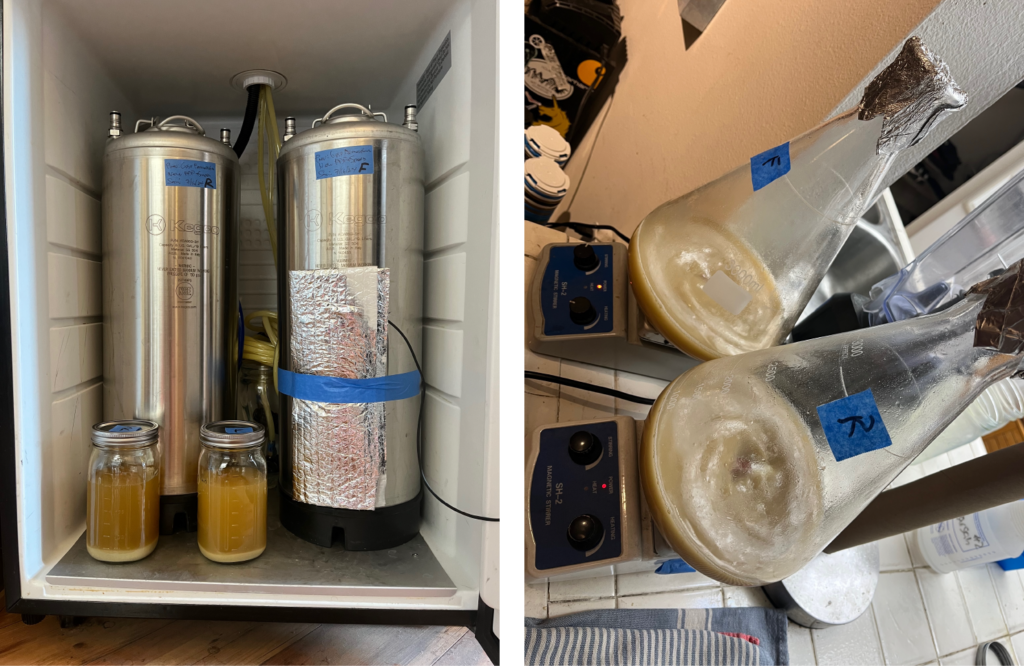
Both batches were fermented in kegs following the fermentation schedule, then cold-crashed and served directly using a floating dip tube (yes, no transfer — this lazy setup has become my homebrew standard).
Result
| Refrigerated | Frozen | |
| OG | 1.053 | 1.053 |
| FG | 1.011 | 1.011 |
| ABV | 5.5% | 5.5% |
| pH | 4.5 | 4.5 |
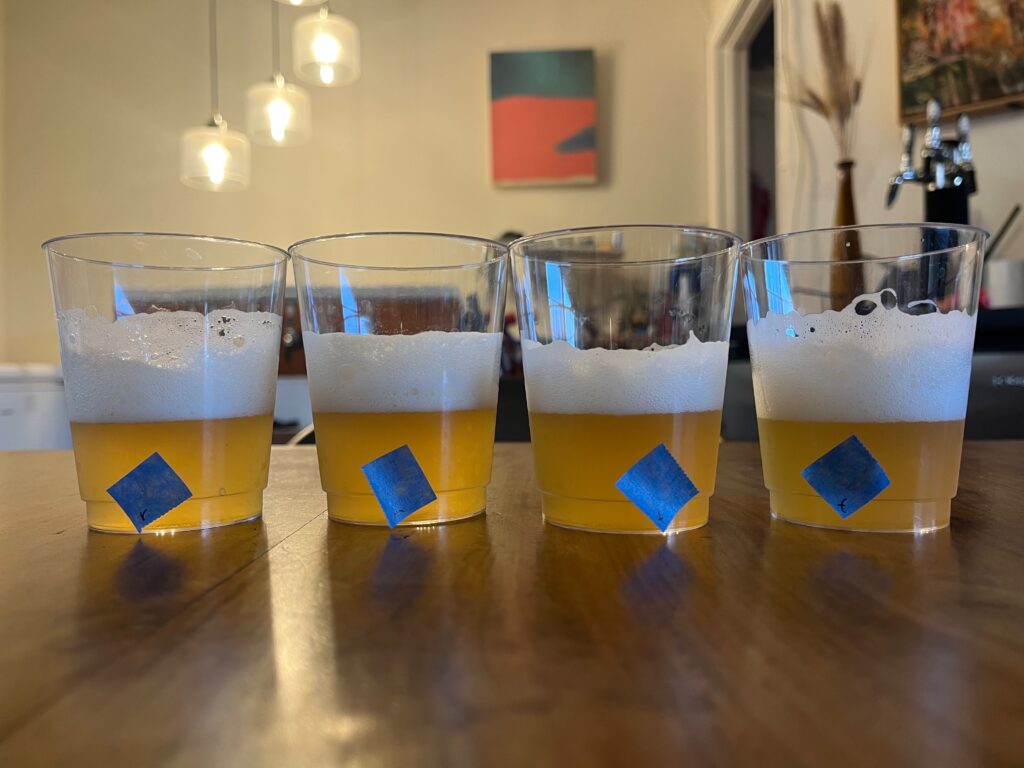
Neither batch cleared up after 3 days post-cold crash, but I prefer this partial haze (similar to Sierra Nevada’s Hazy Little Thing) for this style, though I assume they’ll clear up eventually.
Both batches exhibit unique and enjoyable fresh hop characters—woody, grassy, floral, citrusy, melony, and pineapple-y notes, which I love. The bitterness is present but supportive, well-balanced, and non-lingering. Honestly, I just want to keep drinking these without overthinking or evaluating them… but here we go.
After five semi-blind tests, I could only identify the unique sample twice, which is no better than a random guess. I did notice a sharper grassiness in the aroma of the Frozen Hop batch, while the Refrigerated batch was more mellow. However, my failure in the triangle test suggests that freezing doesn’t significantly impact the flavor profile of fresh hops. Good to know!
I’m bringing these batches to the @socalcerveceros Monthly Meeting at @homagebrewing tomorrow, 9/19/24, at 7:30 pm (I’ll be there a few hours earlier, lol). I’m super excited to see how folks perceive these beers! And of course, I can’t wait to enjoy homebrews from our folks, along with amazing lagers, ales, funky sours, and the hip vibes at @homagebrewing!! Non-members and non-homebrewers are highly welcome! It’s going to be a fun and educational event—please come join!
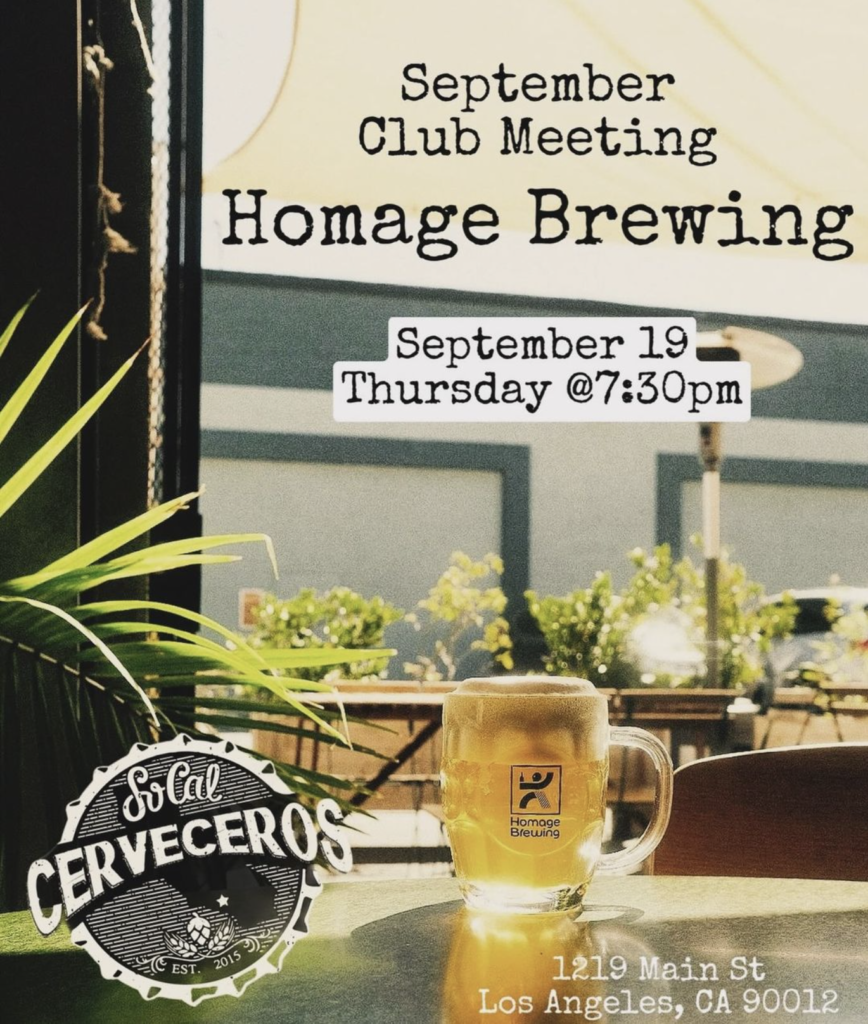
Epilogue – A few days later, I visited @artsdistrictbrewing to learn how they use fresh hops on a commercial scale (they used 160 lbs!).
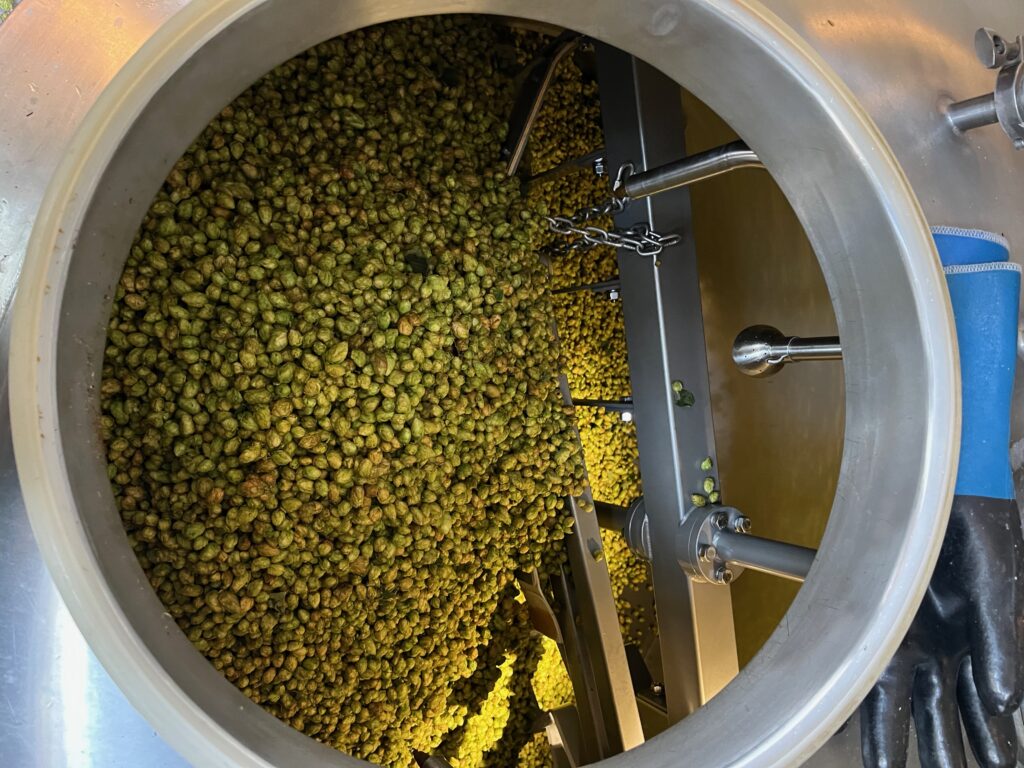
Now, I can’t wait to brew a 100% Fresh Hop Pale Ale at Ikasu Brewing—one that I’m sure we’ll all love (at least the fresh hop fans will). Cheers!

The blog post compares the effects of using frozen versus refrigerated fresh hops in brewing, specifically in a Single Malt and Single Hop (SMaSH) beer. It discusses how each storage method influences flavor, aroma, and overall beer quality
The detailed comparison of frozen vs. refrigerated fresh hops is really insightful. It’s intriguing how storage choices can influence the final taste of a beer. Do you think this difference is more pronounced in certain hop varieties? Cheers to more brewing experiments
Awesome https://is.gd/tpjNyL